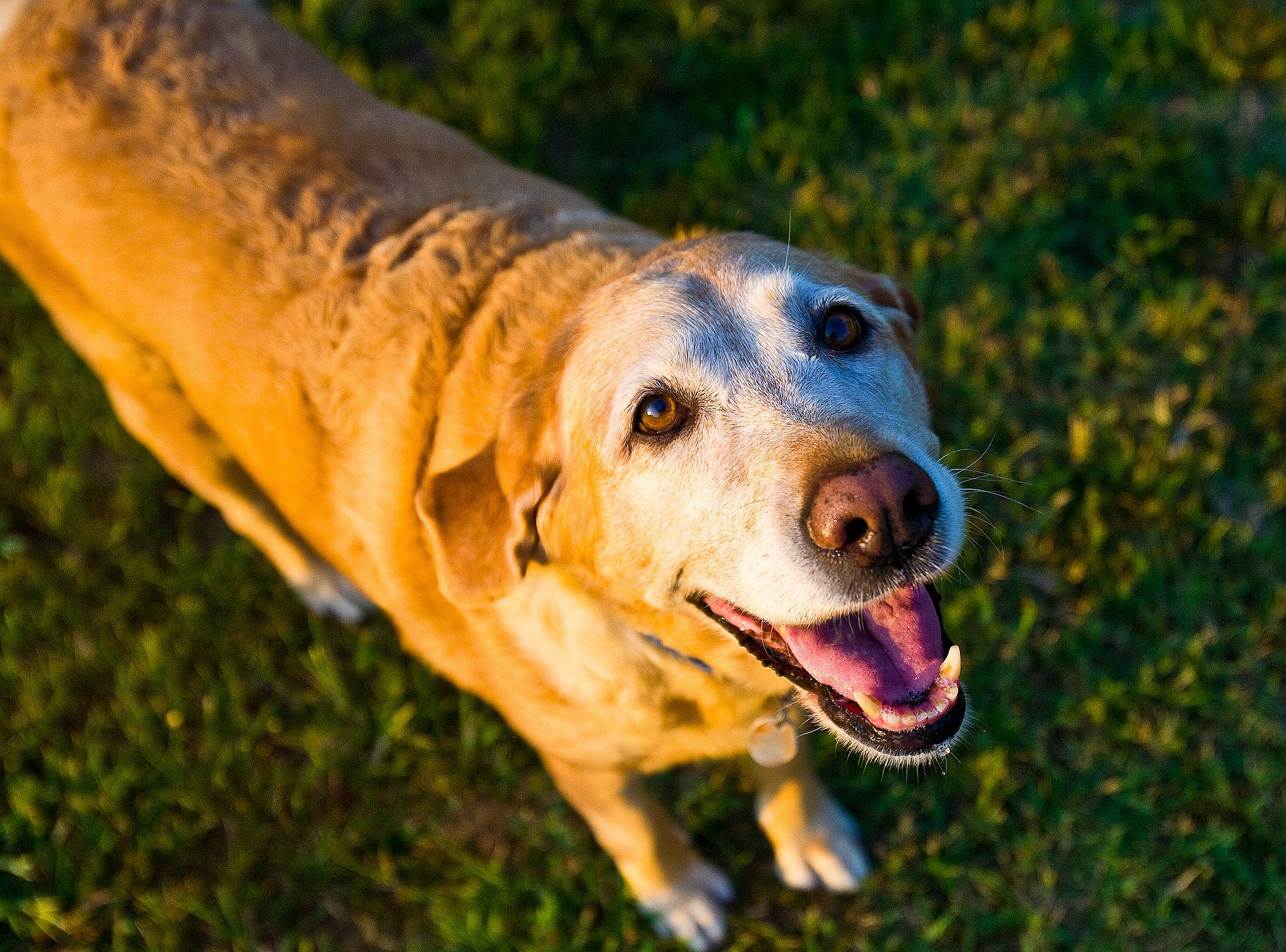
Top tips to a happier senior dog…
With so many of our pets living longer and their role within our families becoming ever more integrated, it is no surprise that many owners are asking “What can I do to care for my dog better?”
The senior years can creep up so whether you have recently noticed some subtle (or not so subtle) changes, here’s some tips that can really help your dog live comfortably. Here’s some signs that your pet may be feeling less than 100% when it comes to their musculoskeletal health:
Exercise intolerance.
This once can be very subtle to begin with. It may be a slower pace during walks, giving up on the ball game earlier or panting a little harder with or without less exertion.

Trouble rising or lowering positions.
This is a common problem for many older dogs. It can also show by a hesitation when jumping onto or off furniture. Even a low lying bed can present challenges, especially if the bedding is soft or spongey.

Stiffness upon rising.
We can all feel a bit stiff after a good rest. It is the same for dogs. If you notice this, please don’t dismiss it. Even if he “warms up” there are ways to minimise the progression of this problem.

A change in demeanour.
Dogs are stoic creatures for the most part, so this can be hard to spot. If you notice that your dog is now moving away when receiving a pat rather than enjoying the rub down, or seems more quiet than usual, these can be sign of discomfort. Even seeking warmer places, getting cranky when a human approaches her when she’s in her bed can be signs of musculoskeletal hurts.

I really don’t like to put a number on when a dog is deemed to be senior. Although we know that larger breeds tend to age more quickly than small breeds, there is a significant influence on their health from their lifestyle, nutrition, sports and physical conformation.
Healthcare for animals has evolved significantly over the last 50 years which has contributed to longer and happier lives. Owners are much better informed and are better able to support their dogs with preventative and complementary treatments.
So what can an owner do to better care for their dog?
Consider supplements.
Joint disease is common in dogs. Supplements are recommended from an early age, but are beneficial at any age. The right supplement can help preserve articular cartilage and the fluid that lubricates joints. Supplements have also been shown to slow down the progression of osteoarthritis.
Not all supplements are created equal, so it is important to discuss options with your pet’s health care professional.
Address your dog’s nutrition.
Obesity is one of the highest contributors to mobility challenges in dogs. Whether you prefer your dog to eat a raw, home-cooked or commercial diet, it is quite easy to ensure that your dog is getting all her nutrients, but also managing weight.
Exercise!
Exercise needs to be tailored to your dog’s current physical and mental condition. Exercise does not need to be a 10km run or hours chasing a ball (in fact, ball chasing is a sure fire way for your dog to injure himself). Short gentle walks, “sniffaris”, stretching and strengthening exercises, are excellent ways to maintain and improve your dog’s mobility.

Environmental adjustments.
The homes of many senior humans have devices to assist in making daily functions and navigating the home environment easier. The same can be done for our dogs. Simple things such as non-slip matting on slippery flooring, ramps instead of stairs, raised food and water bowls, and pet specific heated beds can ensure your dog is comfortable and safe around the home.
Check ups!
Whether it is a check up with your vet, holistic practitioner or of course, massage, it is important that these appointments are made and kept. The frequency depends on your dog’s comfort level, age and current treatments, but at least twice yearly.
These tips are exactly that, tips to help you and your pet live a more secure and comfortable daily life. Not all of these suggestions are necessarily relevant to your dog, in fact your dog may not need any of these just yet.
The most valuable thing we can do for our pets is to recognise changes and try to slow down the progressive changes that comes with ageing.
Implementing a few simple changes can prevent injury and create a positive lifestyle for our golden oldies…
The long term goal is to improve your dog’s quality of life – for today, and all of his tomorrows.